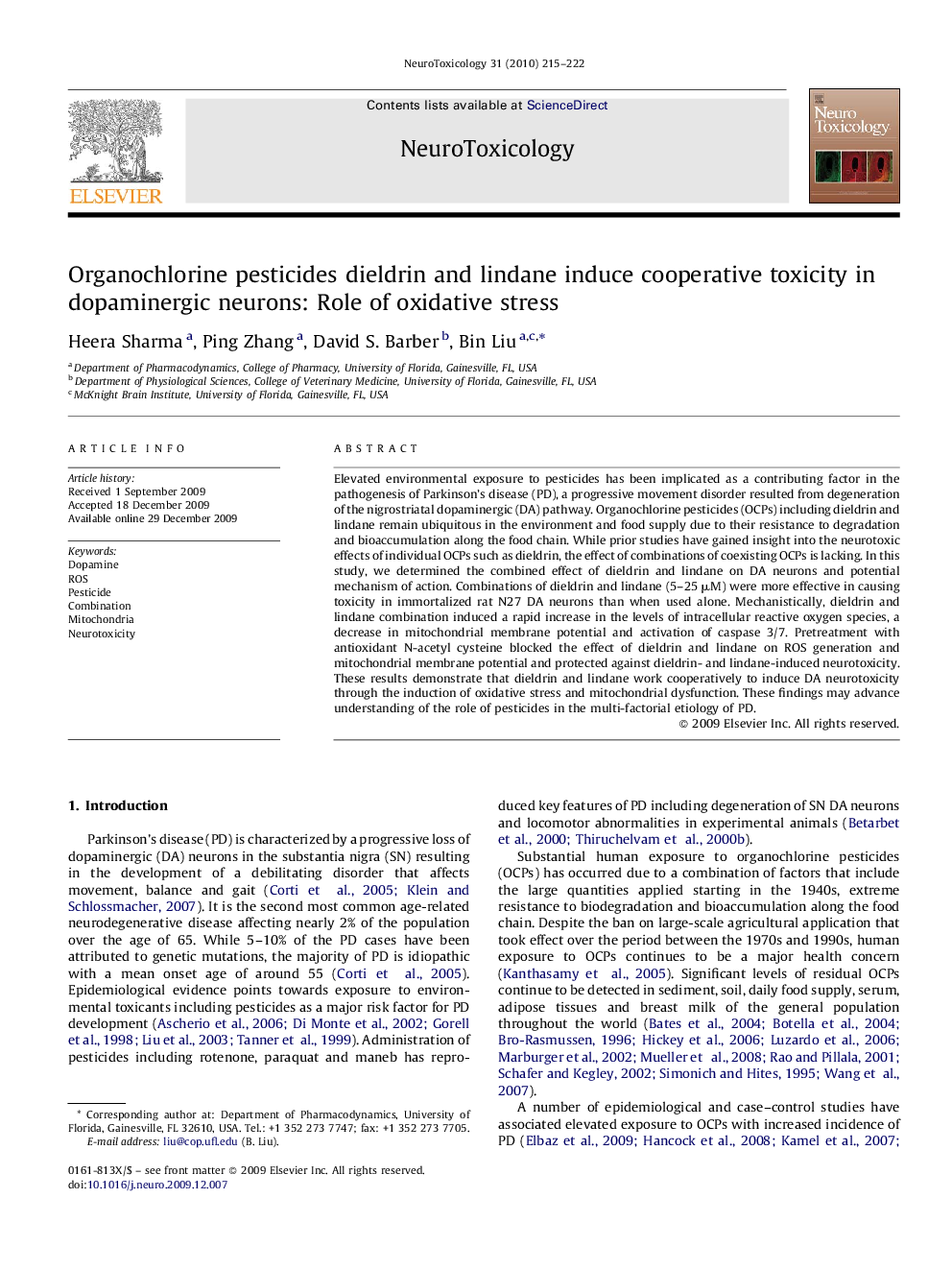| Article ID | Journal | Published Year | Pages | File Type |
|---|---|---|---|---|
| 2590646 | NeuroToxicology | 2010 | 8 Pages |
Elevated environmental exposure to pesticides has been implicated as a contributing factor in the pathogenesis of Parkinson's disease (PD), a progressive movement disorder resulted from degeneration of the nigrostriatal dopaminergic (DA) pathway. Organochlorine pesticides (OCPs) including dieldrin and lindane remain ubiquitous in the environment and food supply due to their resistance to degradation and bioaccumulation along the food chain. While prior studies have gained insight into the neurotoxic effects of individual OCPs such as dieldrin, the effect of combinations of coexisting OCPs is lacking. In this study, we determined the combined effect of dieldrin and lindane on DA neurons and potential mechanism of action. Combinations of dieldrin and lindane (5–25 μM) were more effective in causing toxicity in immortalized rat N27 DA neurons than when used alone. Mechanistically, dieldrin and lindane combination induced a rapid increase in the levels of intracellular reactive oxygen species, a decrease in mitochondrial membrane potential and activation of caspase 3/7. Pretreatment with antioxidant N-acetyl cysteine blocked the effect of dieldrin and lindane on ROS generation and mitochondrial membrane potential and protected against dieldrin- and lindane-induced neurotoxicity. These results demonstrate that dieldrin and lindane work cooperatively to induce DA neurotoxicity through the induction of oxidative stress and mitochondrial dysfunction. These findings may advance understanding of the role of pesticides in the multi-factorial etiology of PD.
